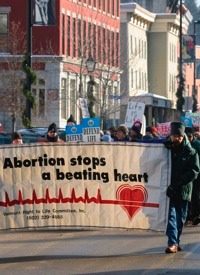
Earlier this month, New York Times columnists Frank Rich and Paul Krugman wrote pieces laying the blame for the murder of an abortionist and a U.S. Holocaust Museum security guard at the foot of President Barack Obama’s critics. Both have received figurative high-fives from the left-wing blogosphere. The Huffington Post’s Dennis Palumbo called Rich’s column “gripping” and added: “What is news … is the unchecked level of rancor, and the seeming lack of interest in how this wave of hate-speech may well contribute to more tragedies.” DailyKos.com reposted the money quotes from Rich’s column in several places and defended Paul Krugman’s column “The Big Hate.” The leftist People for the American Way essentially seconded the columns. Columnists from the New York Daily News and Salon.com published similar sentiments. The Rev. Jesse Jackson took up the familiar gun-control theme in the Chicago Sun-Times.
The chorus of New York Times columnists calling for silencing the right reached a trifecta with Bob Hebert’s June 19 column, “A Threat We Can’t Ignore.” Hebert’s piece had a naked message to anyone criticizing Obama: Shut up. The focus of Hebert’s rage was the rather mild actions by the National Rifle Association to set up a website to oppose any efforts by the Obama administration to ban firearms in violation of the Constitution’s Second Amendment. “While the N.R.A. is not advocating violence,” Hebert acknowledged, “it shouldn’t take more than a glance at the newspapers to understand why this is a message that the country could do without.”
Shut up, he politely explained. You have the right to dissent with policy opinions only when a Republican is in the White House, as far as the New York Times editorial page is concerned. Hebert claimed that the NRA website was unnecessary. “There is no Obama gun ban on the way,” he wrote. However, he concluded his column by proposing the following solution to the current crisis: “The first step should be to bring additional gun control back into the policy mix.” That’s logic, New York Times-style.
While Hebert and his New York Times colleagues didn’t explicitly call for government censorship, none of them put vigorous criticism of Obama into the category of constitutionally protected free speech either. Of the NRA, Hebert says “you can sure blame it for ignoring the tragic lessons of history and continuing to spray gasoline into an environment that we have seen explode time and again.” Let the reader project the line to where such argumentation is heading.
This whole public discussion about the dangers of dissent originated in a Department of Homeland Security report entitled “Right Wing Extremism.” Released in May, the report said that there was no organized right-wing terrorism but that there is a danger in “lone wolf” killers being incited to commit deadly acts. The DHS report echoes a FBI program under the Justice Department called “Operation Vigilant Eagle.” Who are the would-be lone-wolf killers? Who is inciting them? According to the organized left and government officials, anyone who criticizes policies emanating from Washington is an “extremist” and is worthy of a watchful eye from law enforcement at best and of being considered a terrorism danger at worst. “Lone-wolf offenders continue to be of great concern to law enforcement,” the Wall Street Journal reported June 15.
Whenever a crazed killer gives a political motivation, officials always try to place the blame at the feet of its own critics. “Hate speech” can be loosely defined as speech politicians hate. It makes no difference whether the critic is on the political “left” or “right.” The Department of Homeland Security also sought to demonize left-wing critics of Washington policies with its own report on “Leftwing Extremists,” which was written shortly before the report on “Rightwing Extremism.”
Even if a killer doesn’t provide a motivation, journalists always clamor for a reason for any particularly senseless killing. This idiotic tendency of the press was satirized by musician/songwriter Bob Geldof in his 1979 hit song “I Don’t Like Mondays.” The song is about a schoolyard shooting that same year by 16-year-old Brenda Ann Spencer in San Diego, California. After shooting and killing two school officials and injuring eight schoolmates and a police officer, a reporter asked her why she did it. She replied “I don’t like Mondays, this livens up the day.” Geldof’s unforgettable lyrics satirize a conversation between dopey reporters incessantly asking why she did it and the girl’s father, who had no answer:
He can see no reasons, ‘cause there are no reasons.
What reason do you need to be shown?
Tell me why!
I don’t like Mondays.
Tell me why!
I don’t like Mondays.
Tell me why!
I don’t like Mondays. I want to shoot the whole day down.
Crazy doesn’t need a reason.
But that doesn’t mean government officials and a compliant press won’t invent one, if it can help stifle dissent.
Photo: AP Images
Related article:



